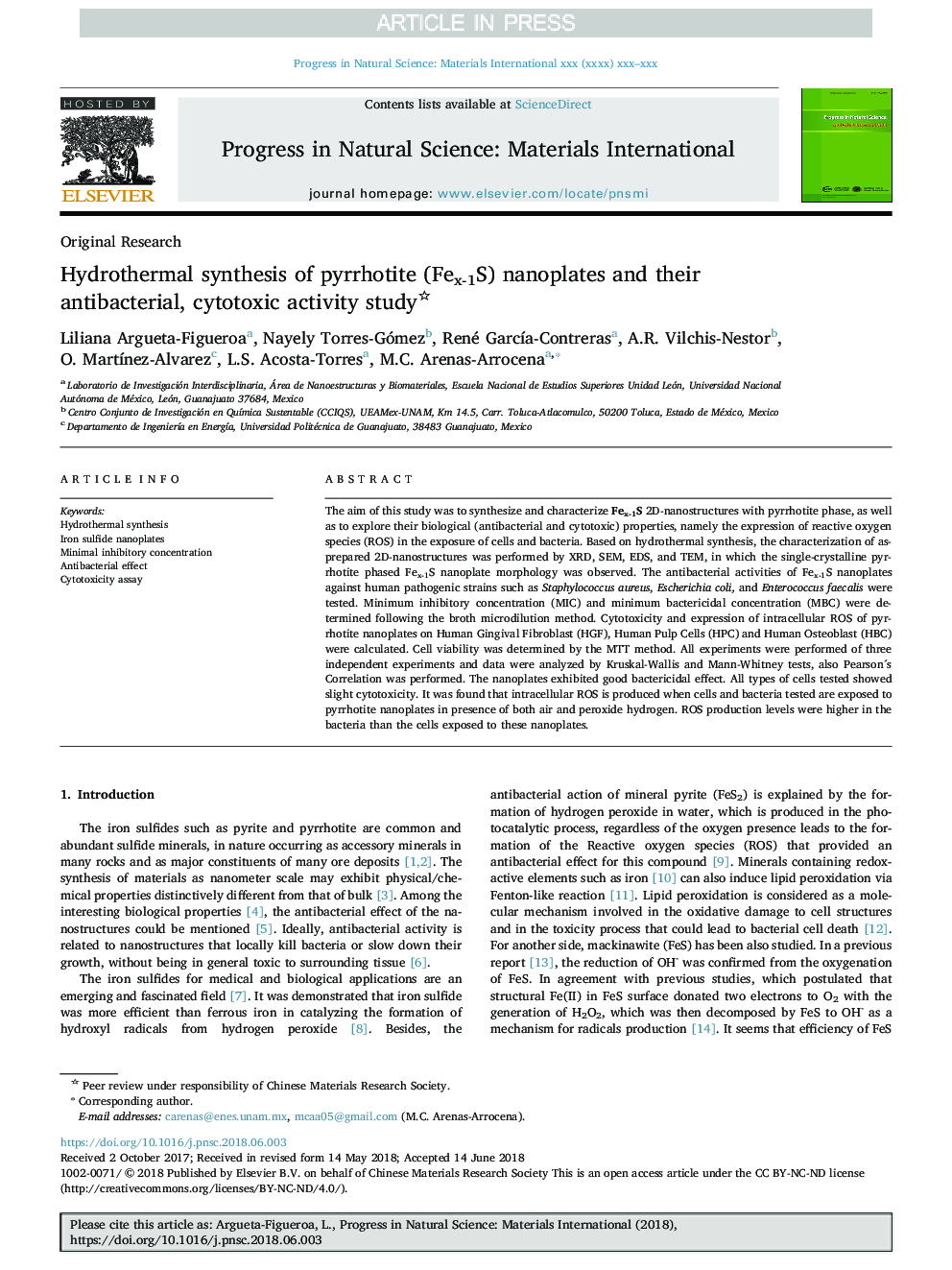| Article ID | Journal | Published Year | Pages | File Type |
|---|---|---|---|---|
| 8961423 | Progress in Natural Science: Materials International | 2018 | 9 Pages |
Abstract
The aim of this study was to synthesize and characterize Fex-1S 2D-nanostructures with pyrrhotite phase, as well as to explore their biological (antibacterial and cytotoxic) properties, namely the expression of reactive oxygen species (ROS) in the exposure of cells and bacteria. Based on hydrothermal synthesis, the characterization of as-prepared 2D-nanostructures was performed by XRD, SEM, EDS, and TEM, in which the single-crystalline pyrrhotite phased Fex-1S nanoplate morphology was observed. The antibacterial activities of Fex-1S nanoplates against human pathogenic strains such as Staphylococcus aureus, Escherichia coli, and Enterococcus faecalis were tested. Minimum inhibitory concentration (MIC) and minimum bactericidal concentration (MBC) were determined following the broth microdilution method. Cytotoxicity and expression of intracellular ROS of pyrrhotite nanoplates on Human Gingival Fibroblast (HGF), Human Pulp Cells (HPC) and Human Osteoblast (HBC) were calculated. Cell viability was determined by the MTT method. All experiments were performed of three independent experiments and data were analyzed by Kruskal-Wallis and Mann-Whitney tests, also Pearson´s Correlation was performed. The nanoplates exhibited good bactericidal effect. All types of cells tested showed slight cytotoxicity. It was found that intracellular ROS is produced when cells and bacteria tested are exposed to pyrrhotite nanoplates in presence of both air and peroxide hydrogen. ROS production levels were higher in the bacteria than the cells exposed to these nanoplates.
Keywords
Related Topics
Physical Sciences and Engineering
Materials Science
Electronic, Optical and Magnetic Materials
Authors
Liliana Argueta-Figueroa, Nayely Torres-Gómez, René GarcÃa-Contreras, A.R. Vilchis-Nestor, O. MartÃnez-Alvarez, L.S. Acosta-Torres, M.C. Arenas-Arrocena,
